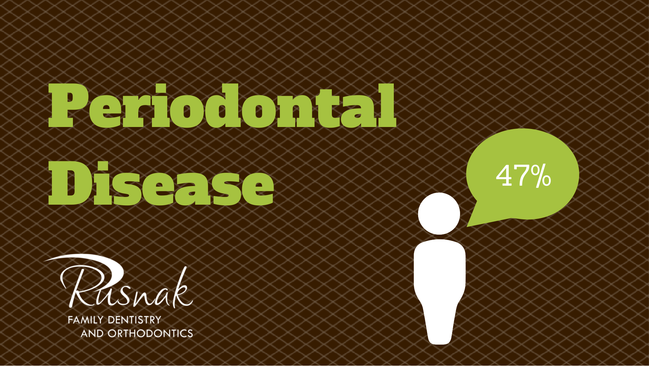Gingivitis vs. Periodontitis
In 2012, the Center for Disease Control reported that almost half (47%) of all Americans over the age of 30 have some degree of periodontal disease. Even though it’s a disease the affects so many people, most Americans are uneducated about the causes, symptoms, and types of periodontal disease (gum disease).
One major gap in understanding is in the differences between gingivitis and periodontitis.
What is the Difference Between Gingivitis and Periodontitis?
Gingivitis and Periodontitis are both types of periodontal disease. The key difference though is that gingivitis is reversible, while periodontitis is not. This is because periodontitis involves bone loss, which cannot be recovered.
What is Gingivitis?
Gingivitis is a term used to describe gum inflammation that is caused by excess plaque on the teeth. Many times people will have gingivitis and not be aware, because the symptoms aren’t necessarily painful. Symptoms may include gums that bleed easily when brushed or flossed, swollen gums, or bright red gums.
What is Periodontitis?
As gingivitis progresses, it turns into periodontitis, a more severe type of periodontal disease. As gums inflame and recede, they begin to pull away from the teeth, creating pockets where bacteria build up. Typically people begin to notice when they have periodontitis because they may experience increased sensitivity, pain when chewing, sores on the inside of their mouth, or loss of teeth.
How Do I Know If I Have Gingivitis?
It’s possible that you brush and floss everyday but may still have some level of gingivitis. The best indicator that something may be wrong is bleeding when you brush or floss. Healthy gum tissue does not bleed. If your gums bleed when you brush or floss, it’s important that you visit your dentist and discuss what may be going on. Your dentist and hygienist will work together to evaluate your oral hygiene regimen and restore your gums to a healthy status.
Remember: gingivitis is reversible, while periodontitis is not. The sooner you do something to stop it, the better.
How Do I Know If I Have Periodontitis?
Typically you will begin to notice some sort of pain or discomfort when your gum disease progresses to periodontitis. Additionally, you may notice increased sensitivity, loosening teeth, and soreness.
As your gums begin to separate from your teeth, it leaves spaces for bacteria to grow under the gum line where your toothbrush cannot reach. These periodontal bacteria deteriorate your teeth’s supporting bone structure, causing pain and eventually tooth loss.
Gingivitis and Periodontitis Treatments
The treatment that your dentist prescribes will be based on the severity of your disease. If your dentist diagnoses your case early enough, they may prescribe a more strict brushing and flossing routine or more frequent visits. More serious periodontitis cases however may necessitate periodontal surgery.
Stay tuned for our next blog entry, in which we will discuss our most common prescribed treatments for periodontal disease at Rusnak Family Dentistry.
Periodontal Disease and You
If you think you may have gingivitis or periodontitis, you are not alone. Remember, 47% of Americans above the age of 30 have some degree of periodontal disease. The important thing is that you do something about it! An active infection in your mouth opens up your body to other types of infections including diabetes and cardiovascular disease.
Do you have questions about gingivitis or periodontitis? Feel free to comment below and we will do our best to answer them!


1 Comment
The Difference Between Plaque and Tartar - Rusnak Family Dentistry
[…] When tartar isn’t treated promptly it can be bad news for your smile. The presence of tartar in your mouth makes it much harder to brush and floss effectively. And when you aren’t able to brush and floss effectively, you are at a high risk for both tooth decay and gum disease. […]